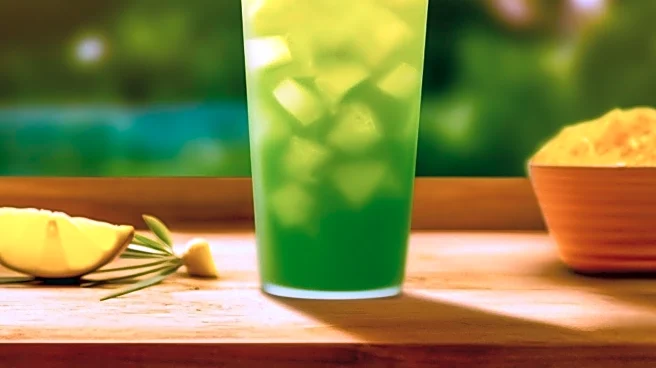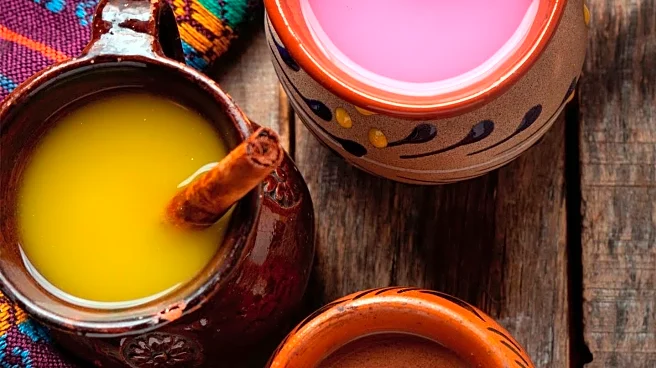What's Happening?
As Southern California experiences a heat wave, the Mexican suero has gained popularity as a refreshing nonalcoholic cocktail. The suero, traditionally used in Mexico as an IV fluid for hydration, is now being served in restaurants and bars as a drink made from lime juice, sparkling water, and a pinch of salt in a salt-rimmed glass. This beverage is celebrated for its hydrating properties and is often used as a hangover cure or prevention. The suero is easy to make, inexpensive, and contains no sugar, making it a healthy alternative to other mocktails. Its popularity is growing among those seeking a festive yet nonalcoholic option during social gatherings.
Why It's Important?
The rise in popularity of the suero highlights a growing trend towards healthier beverage options, especially during extreme weather conditions like heat waves. As people become more health-conscious, drinks like the suero offer a way to stay hydrated without consuming sugar-laden beverages. This trend could influence the beverage industry to innovate and offer more nonalcoholic, health-focused options. Additionally, the suero's simplicity and affordability make it accessible to a wide audience, potentially impacting consumer preferences and driving demand for similar drinks.
What's Next?
With the increasing interest in health-conscious beverages, restaurants and bars may expand their offerings to include more variations of the suero and similar drinks. This could lead to collaborations with local spice companies to create unique flavors and enhance the drink's appeal. As the trend grows, beverage companies might explore bottling and distributing suero-like drinks, tapping into the market for ready-to-drink nonalcoholic cocktails. The ongoing heat wave may further accelerate this trend, prompting more establishments to promote hydrating options.
Beyond the Headlines
The cultural significance of the suero reflects a broader appreciation for traditional Mexican practices and their adaptation in modern contexts. As the drink gains popularity outside Mexico, it showcases the blending of cultural traditions with contemporary lifestyle choices. This could foster greater cultural exchange and understanding, as well as inspire culinary innovation by incorporating traditional elements into new creations.













